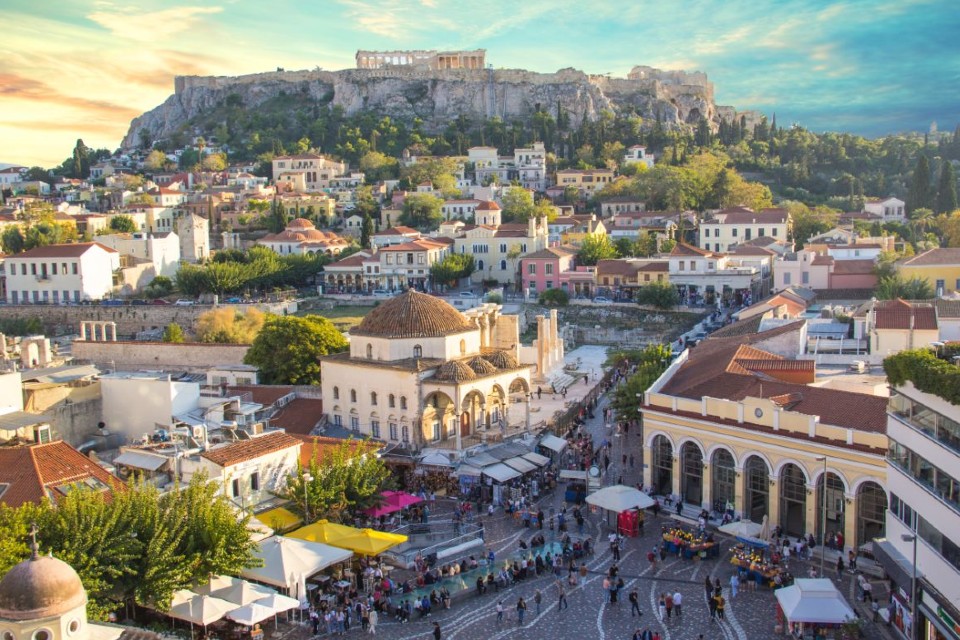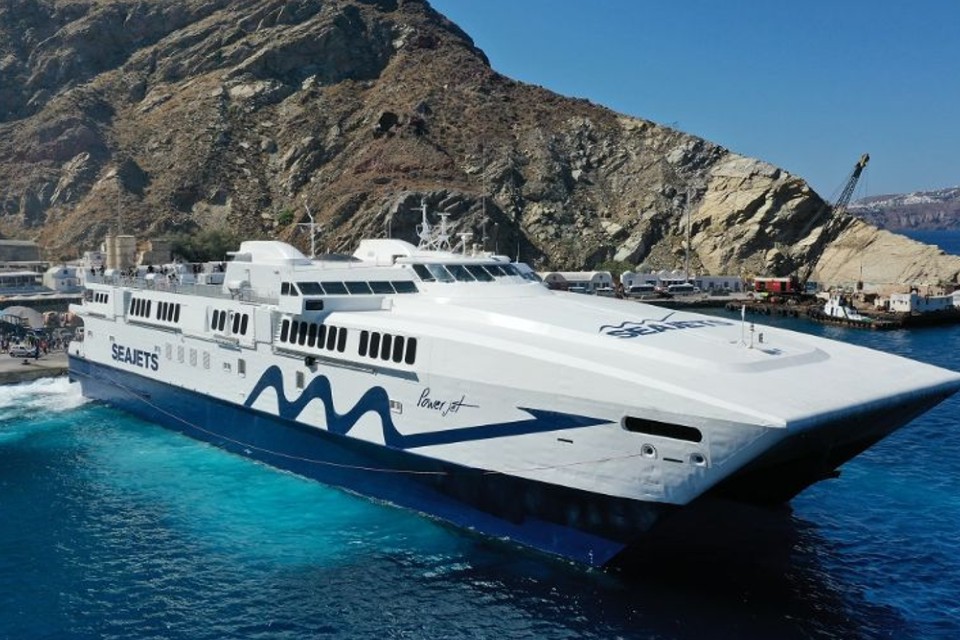According to legend Leto gave birth to Apollo on the island of Delos bringing to this world the music of light. This invisible harmony burst over the Aegean turning to stone and bringing the Cyclades to life. Deriving their name from the word “kyklos” meaning circle they surround the uninhabited sacred island of Delos forming an island group that is known for its ability to enchant, entertain, and soothe the spirit of both man and god alike.
The islands were the cradle of the Cycladic civilization (3000 – 1000 BC), which developed during the Bronze Age and since then have been inspirational to artists with their marble figurines, which are the legacy of the islands. Considered crude and ugly when first discovered, this art has brought to bear a strong influence on the 20th century artists and sculptors such as Picasso, Modigliani, Henry Moore and Constantin Brancusi.
The Minoans of Crete then colonized the islands, making Sanotrini’s Akrotiri the center of their trading activities. Later on the Myceneans dominated making Delos their religious capital. By the 11th Century BC the Dorians invaded the islands marking the start of the Dark Ages. Eventually the Venetians made their strong mark on the islands ruling between 1204 and 1453. Their influence is evident even today with rich cultural and architectural legacy.
Overview of the Cyclade Greek Islands
There are 56 islands in the group with only 24 inhabited some tiny and docile like Folegandros, and others like Mykonos, Paros and Ios pulsate with nightlife till dawn. Most of the islands are arid and rocky, with the exception of wooded Andros, Kea and Naxos. Syros the regional and commercial capitol is one of the few islands in the group not dependent on tourism for their main source of revenue.
The Cyclades are best known for their beaches and whitewashed towns. The most famous of all is the cliff top town of Fira on Santorini. This volcanic island first erupted in 1450 BC forming Santorini’s crescent shape. The island is widely believed to be the lost city of Atlantis, and with the recent discovery of remains dating back to Neolithic times at the archaeological site of Akrotiri, this debate will surely not rest. The ongoing excavations that are only 3% complete continuously both amaze and bewilder archaeologists from around the world, as they now realize that numerous civilizations may be buried at the site. It is estimated that if a team of 150 Archaeologists would work 24 hours a day for 365 days a year, it would be 700 years before the site would be completely excavated.
Life on the Cyclades is centered on “chora” or town where all of life’s basic amenities could be found with great ease. However do expect to miss such luxuries as Seven-Elevens and drive through windows. Life on the islands has its own pace that takes a few days to assimilate into. The enchantment of a typical Cycladic town is enough to mystify any soul. Mykonos? chora is the epitome of this with its web of dazzling white alleys and cube shaped houses. Built in a maze of narrow lanes to both defy wind and pirate raids, visitors will be sure to get lost at least a few times.
Eventually one is freed of time constraints and eventually even the concept of time, to instead be absorbed with visions of beaches, cafes, restaurants, fine wine, dancing and of course most importantly soul searching.
Traveling through out the Cyclades may be very difficult at times, primarily due to the lack of a consistent and centralized source of ferryboat schedules and information. Additionally those traveling during the summer peak season of end of June to early September have also to contend with the mysterious and disrupting effects of the “Meltemia”. These high winds although bringing with them a cooling relief to the scorching summer temperatures can cause constant and unpredictable cancellations of scheduled ferryboat and flying dolphin schedules throwing a wrench into any ones overly planned travel itinerary.
However, overall the Greek ferryboat system is the best way to travel and truly experience these islands. The ferries usually run daily and frequently, and eventually all the islands of the Cyclades connect via this system with the centrally located island of Paros being its hub. A little patience and an Odyssean appetite for adventure is all it takes to explore the Cyclades by sea.
Air travel between the islands although improving, is limited by the lack of direct inter-island flights and limited airports. Mykonos and Santorini have international airports, and islands with domestic airports include Syros, Milos, Paros and Naxos. Thus travel by air can be frustrating, and at times just as time consuming as sea travel. In addition t is always best to allow for extra time when planning for inter island-travel, especially when trying to catch an international flight out of Greece. A phone call to the Greek Coast Guard, Ferryboat Company or ticketing agent may save a lot of time and trouble.
Just as light is said to have given birth to the Cyclades, it was also said that Aphrodite passed by and made the people of this land dreamers, inventors, travelers and lovers of horizons, so it is only fitting to pay homage to this phenomenal luminosity when traveling the Cyclades. For when the sun begins its graceful decent over the islands it is as if all the spirits both ancient and reborn perch themselves on some rocky peak and with time standing still the soothing moment of a simple sun setting is forever cherished.
Written by, Basil Boziotis






















